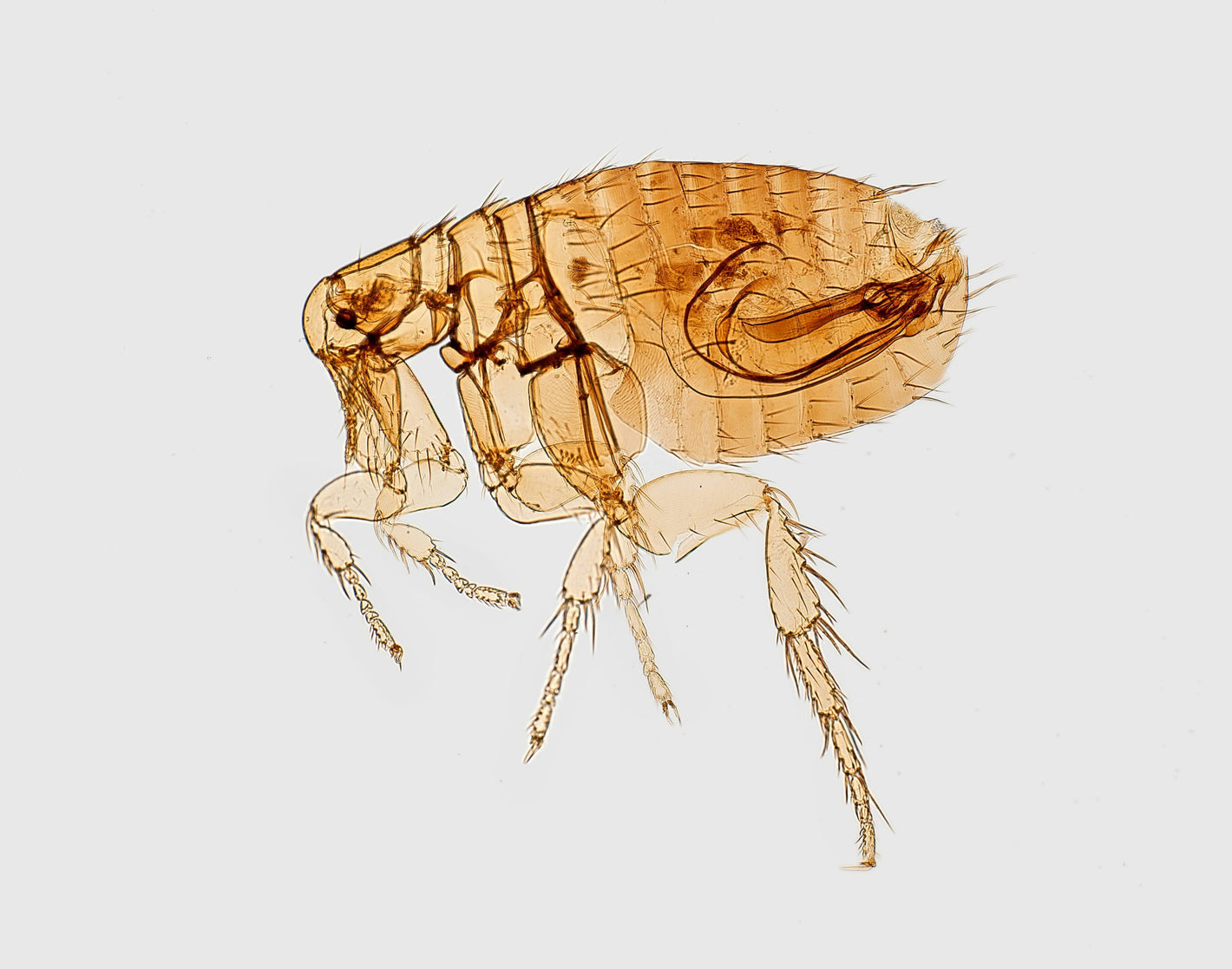Can Fleas Travel on Humans to Another House?


Related products
Fleas are sneaky travelers that are seen to cause significant discomfort and disease in pets and humans. Fleas are usually associated with pets with fur like dogs and cats, because they typically dwell in fur coats. But in reality, fleas aren't exclusive to dogs and cats; they at times opportunistically latch onto human hosts for short-term transportation or feeding purposes.
Having an insight into fleas transportation helps us to effectively prevent infestations caused by these parasites. This is important in maintaining public health safety standards and individual comfort levels at homes, where such invasions quickly become a stressful ordeal.
What are Fleas?
Fleas are small external parasites. They have over 2,500 species globally and measure about an eighth of an inch. Their bodies are designed for easily navigating through furs and feathers. Fleas are mostly considered pests because they infest pets like cats and dogs, causing discomfort due to allergic reactions from their bites. Fleas are also seen transmitting diseases such as Plague or Typhus, thus requiring effective control methods.
How do Fleas Travel?
Fleas, having multiple unique characteristics, are well equipped to travel across different furry animals like dogs and cats. They have a flattened body enabling them to navigate through the fur or feathers of host animals easily.
Fleas also have strong, large hind legs which they use for jumping, and they can jump as high as 150 times their height. This makes their transfer from one host animal to another very easy
They also possess sharp mouthparts that facilitate their feeding of the host's blood, but firmly attach themselves, preventing easy dislodgement during movement.
Fleas' hardy exoskeletons also provide them with protection against mechanical forces like the ones involved in pet grooming, increasing their chances of prolonged survival while hitchhiking around environments undetected.
What is the role of Humans in Flea Transportation?
Humans are not the primary hosts for fleas but are seen to aid these parasites' transportation from one host to another. Fleas don't stay on humans like they do in other furry hosts. However, they temporarily attach to a human cloth and take a ride when given an opportunity or out of necessity, as in cases of scarcity of preferred hosts which are usually pets.
There are multiple factors that are seen to influence this transportation and some include
- Flea infestation levels at home or areas where our clothes came into contact with them, people that have pets at home have increased risk due to their proximity
- Personal lifestyle habits like hiking through wooded areas and spending considerable time outdoors increase chances of getting in contact with external sources
Can Fleas Travel on Humans to Another House?
Even though humans are not the primary hosts, they can be an accidental transportation for the pests increasing infestation by the parasites.
Fleas prefer furry hosts for permanent residence and also for breeding activity. This is mainly because of the protection and heat provided by the fur coats of these animals, but still, humans aren't completely off-limits. Fleas don't actively reside or reproduce on humans. Still, they temporarily attach onto clothing or personal belongings and hitch a ride unnoticed, enabling movement between different environments.
How to Prevent and Control Flea Infestations
Avoiding Flea Transportation:
Keeping our hygiene when visiting or staying in flea-prone areas, and cleaning clothes that are exposed to such a kind of environment. Regular treatment with vet-approved products is also important for pet owners in order to prevent fleas from hitching a ride on their pets.
Controlling Flea Infestations:
Once infected with fleas, one needs to clean carpets and furniture with proper vacuuming followed by hot water laundry for removable fabrics.
In order to ensure total elimination without harm to inhabitants we need to treat with pesticides under proper expert advice. We always need to make sure we are following the instructions on the label when applying the pesticides for the best results while also protecting everyone's health and safety.
Takeaway
Fleas, common pests on pets, may also latch onto humans for transport. Even Though It is less frequent than animal infestation, human-induced flea transportation is possible, especially in pet-owning households or during exposure to environments with high flea presence. Preventive measures include cleanliness and regular vet-approved pet treatments while controlling active infestations involves thorough cleaning combined with expert-guided pesticide treatment.
Frequently Asked Questions
Can I carry fleas on my clothes?
Yes, Sometimes humans carry fleas on clothes. Fleas are known to latch onto clothing temporarily when they cannot find their preferred hosts (typically furry animals) or during high infestation levels in a given environment.
Can fleas be transferred from home to home?
Yes, fleas are transferred from one home to another. Transfer usually occurs when infested pets move between houses or when humans inadvertently carry them on clothing or personal belongings after visiting a heavily infested location.
How do I make sure I don't bring fleas home?
To prevent bringing fleas home, keep them clean, especially after visiting flea-prone areas. Wash clothes in hot water and regularly treat pets with vet-approved products to deter flea infestation.
Can fleas travel on people?
While not their preferred mode of travel or habitat, fleas temporarily attach themselves to humans for transportation, typically via clothing or personal belongings.






































 Rated Excellent by 26,523+ Reviews
Rated Excellent by 26,523+ Reviews